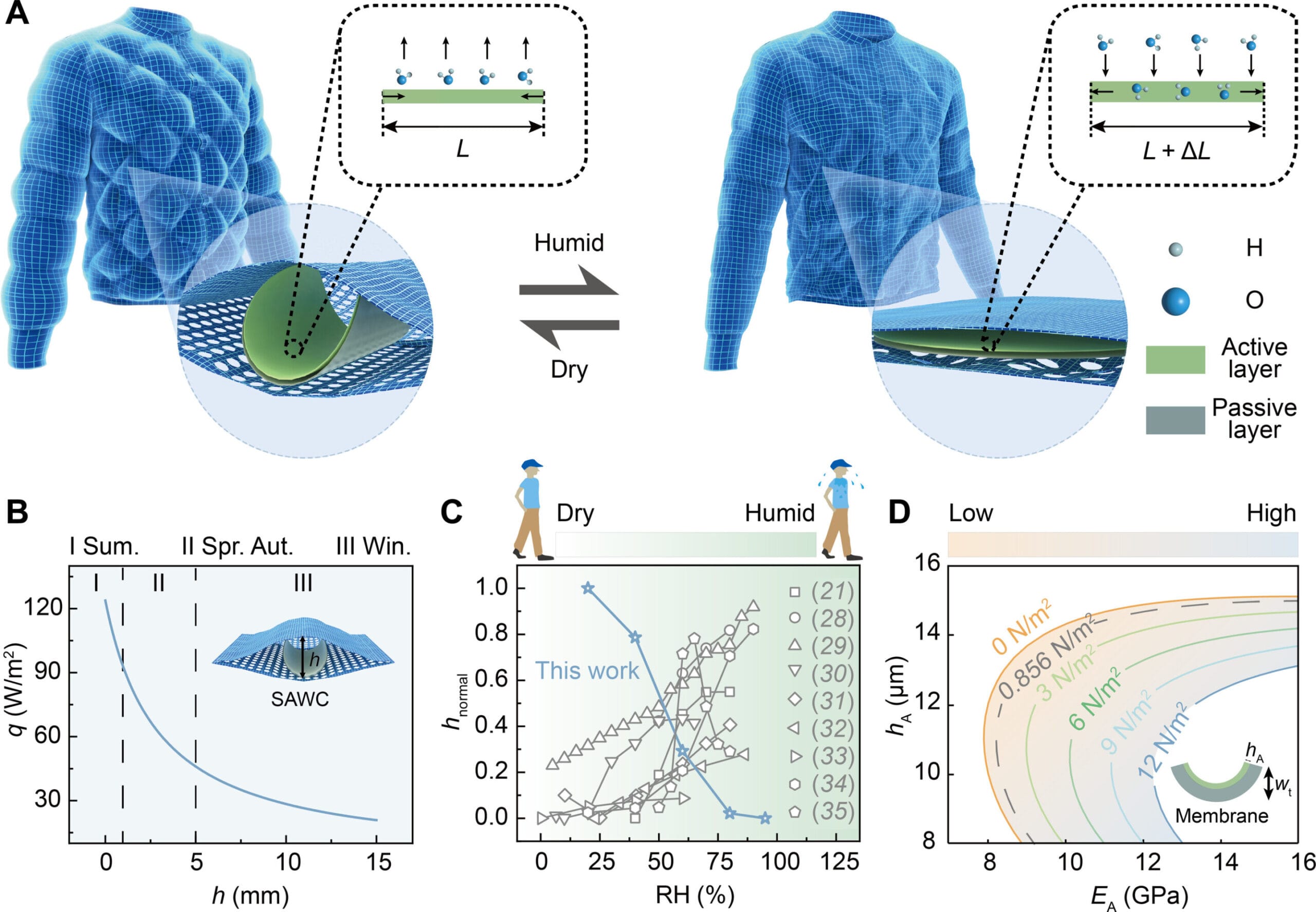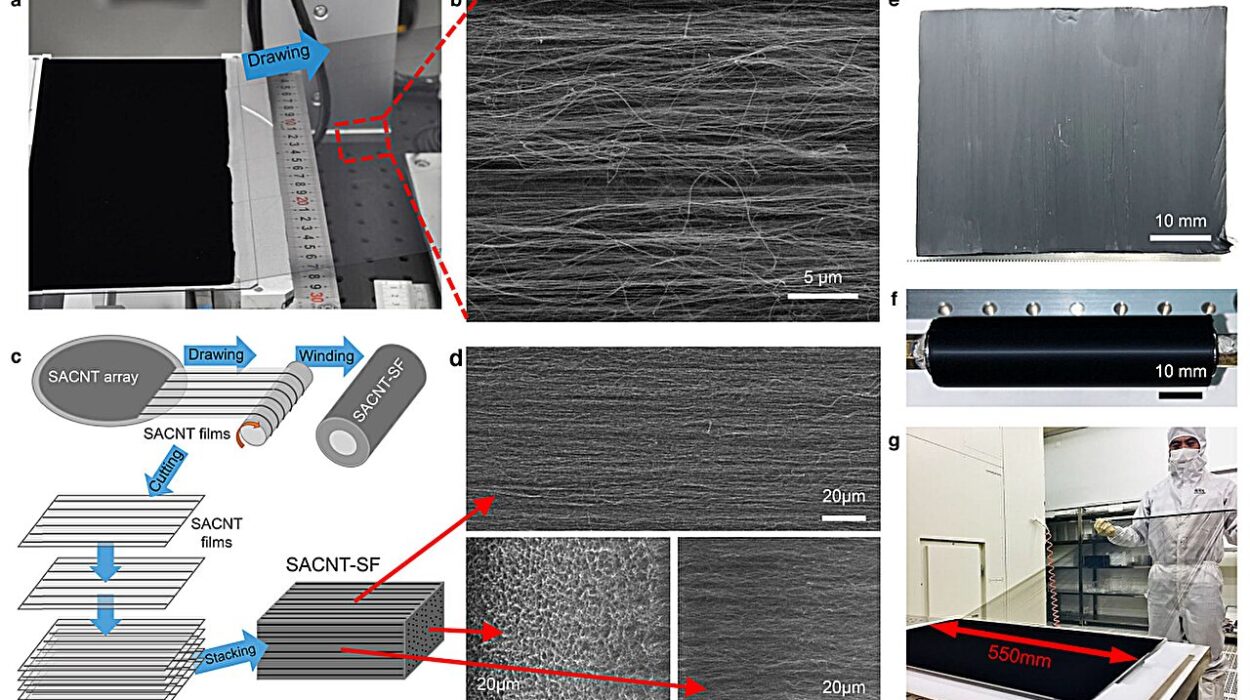When winter arrives, we wrap ourselves in warm jackets, scarves, and gloves, hoping to stay cozy against the biting cold. But as anyone who has taken a brisk walk or climbed a hill in heavy winter clothes knows, warmth comes with a problem. The moment our body starts working harder, we begin to sweat under all those layers. Suddenly, the very clothing that protected us feels suffocating—hot, sticky, and uncomfortable.
The obvious solution is to peel off a layer, but then we risk losing too much warmth. Traditional winter clothing simply doesn’t know how to adapt. It’s either too much or too little, and our bodies end up paying the price.
A Jacket That Listens to Your Body
What if our clothes could think? What if they could sense when we were sweating and adjust themselves to keep us comfortable without us having to do anything?
This isn’t just a futuristic fantasy—it’s the question that inspired Xiuqiang Li and his colleagues at Nanjing University of Aeronautics and Astronautics in China. Their answer is a remarkable new type of jacket that contains a filling made from a special bacterial cellulose membrane. Unlike traditional materials, this filling actually changes its thickness in response to humidity, making it sensitive to human sweat.
In dry, cool conditions, the membrane expands to a thick 13 millimeters, locking in warmth like a fluffy down jacket. But when the air becomes more humid—such as when sweat starts to build up—the material shrinks to just 2 millimeters. Suddenly, the jacket becomes thinner and allows heat to escape, keeping the wearer cooler and more comfortable.
In other words, this is clothing that responds to the body’s needs in real time.
From the Lab to the Real World
To prove this idea wasn’t just clever science on paper, the researchers first tested the fabric in the lab using a system designed to mimic human skin. This allowed them to carefully monitor how well the material could regulate temperature under different conditions.
But they didn’t stop there. The team integrated their sweat-sensitive filling into actual commercial down jackets and gave them to volunteers. People wore the jackets while walking, cycling, and moving around in everyday situations. The results were striking.
Compared to regular jackets, the sweat-activated versions kept body temperature in a comfortable range for much longer. In fact, the researchers reported in Science Advances that their jackets expanded the body’s “thermal regulation capability” by nearly 83% and extended comfort time—without overheating or feeling chilled—by an average of 7.5 hours across 20 different cities.
This wasn’t just an improvement. It was a redefinition of what clothing could do.
Why This Matters
For many of us, staying comfortable in winter is about convenience. But for people who work outdoors—sanitation workers, police officers, couriers, and construction staff—comfort can also mean safety. Sweating too much in the cold can lead to dehydration, fatigue, dizziness, and other health problems. A jacket that can prevent overheating while still keeping the wearer warm could make long hours in harsh conditions much more bearable.
There are also exciting possibilities for athletes, hikers, and anyone who spends extended time outdoors. Imagine climbing a mountain or biking through frosty winds without having to constantly adjust layers of clothing.
Looking Ahead
Of course, like all breakthroughs, this technology still has hurdles to overcome before it reaches store shelves. Researchers need to test how well the bacterial cellulose membrane performs in extreme conditions, how durable it remains after months of wear and washing, and whether it can be adapted for different styles of clothing beyond jackets.
But the potential is enormous. Instead of choosing between comfort and protection, we may soon have clothing that offers both—automatically.
The Future of Intelligent Clothing
When you think about it, clothing has always been one of humanity’s most important inventions. It allowed us to survive in cold climates, protect ourselves from the elements, and even express identity and culture. Now, for the first time, our clothes are learning to respond to us, almost as if they are alive.
Sweat-sensitive jackets may just be the beginning. The same principle could be applied to work uniforms, military gear, sportswear, or even casual everyday outfits. One day, you might pull on a jacket in the morning and never think twice about whether you’ll be too hot or too cold—it will simply adjust to your body’s needs.
What Li and his team have created is more than just a jacket. It’s a glimpse into a future where clothing isn’t passive fabric, but an active partner in our comfort and health.
More information: Xiaofeng Jiang et al, Sweat-sensitive adaptive warm clothing, Science Advances (2025). DOI: 10.1126/sciadv.adu3472






